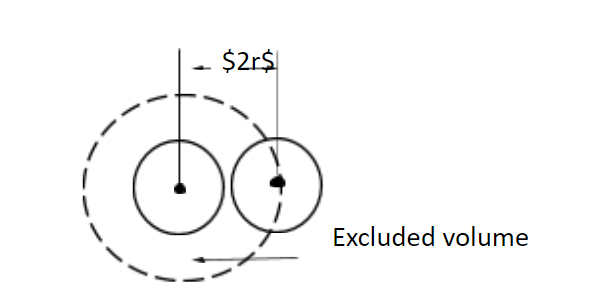Question
Question: The ratio of coefficient of thermal expansion \[\alpha = \dfrac{{{{\left( {\dfrac{{partialV}}{{\part...
The ratio of coefficient of thermal expansion α=V(∂TpartialV)P and the isothermal compressibility β=V(∂PpartialV)T for an ideal gas is

A.−TP
B.TP
C.−PT
D.PT
Solution
As it is given in the question that we need to find the ratio between coefficient of thermal expansion and isothermal compressibility for an ideal gas then definitely we will use the ideal gas equation to calculate the derivatives.
Formula Used: Ideal gas equation
PV=nRT
Where,
P represents the pressure,
V represents the volume of gas,
T represents the temperature,
R represents the gas constant,
n represents the number of moles.
Complete step by step answer:
First we will understand the following terms mentioned in question. One is coefficient of thermal expansion and coefficient of isothermal compressibility.
Coefficient of thermal expansion α is the coefficient which explains about the change in size of an object with the change in temperature. Coefficient of isothermal compressibility β is the coefficient which measures the fractional change in volume with change in pressure.
Now we will understand the given coefficients numerically. The value of given coefficients are,
α=V(∂TpartialV)P and β=V(∂PpartialV)T
Now, we will use the ideal gas equation to calculate the values of α and β. So, consider the ideal gas equation as
PV=nRT
⇒V=PnRT
Calculation of α: for calculating the coefficient of thermal expansion, we have given that α=V(∂TpartialV)P . First we will calculate the value of (∂T∂V)P.
Again considering the ideal gas equation as
V=PnRT
Now partially differentiating V with respect to T keeping P constant we get,
(∂T∂V)P=PnR
Now substituting in the value of α=V(∂TpartialV)P we get,
⇒α=V(∂TpartialV)P=(PVnR)
Using, PV=nRT we get.
⇒α=(PVnR)=(nRTnR)
⇒α=T1 −(1)
Calculation of β: for calculating the coefficient of isothermal compressibility, we have β=−V(∂PpartialV)T . Here, a negative sign indicates the compression. First we will calculate the value of (∂P∂V)T.
Again considering the ideal gas equation as
V=PnRT
Now partially differentiating V with respect to P keeping T constant we get,
(∂P∂V)T=−(P2nRT)
Now substituting in the value of β=−V(∂PpartialV)T we get,
⇒β=−V(∂PpartialV)T=−V−P2nRT
⇒β=−V−P2nRT=(P1×PVnRT)
Using, PV=nRT we get.
⇒β=(P1) −(2)
Now we need the ratio of αand β. So, we will divide the equation (1) by (2) we get,
α=T1 −(1)
β=(P1) −(2)
⇒βα=(P1)(T1)
⇒βα=TP
Final result: The ratio of coefficient of thermal expansion α=V(∂TpartialV)P and the isothermal compressibility β=V(∂PpartialV)T for an ideal gas is βα=TP.
Therefore, the correct option is (B).
Note:
The coefficient of isothermal compressibility is given by β=−V(∂PpartialV)T. Here negative sign indicates the compression or decrease in volume.
There is one more coefficient known as coefficient of volume expansion γ.
The ratio between the expansions is given by γ:β:α=3:2:1.
